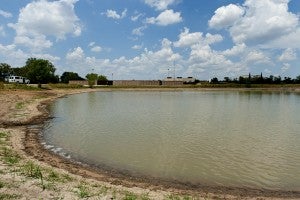EPA’s Water Report: A Good but Incomplete Start
 One study cannot answer every question about water pollution risks from oil and gas drilling, nor should it be expected to. But as my colleague Nichole Saunders pointed out, the oft-quoted statement of EPA’s water study – that it found no evidence of “widespread, systemic impacts on drinking water sources”– implied to some that activities related to hydraulic fracturing had been declared risk-free.
One study cannot answer every question about water pollution risks from oil and gas drilling, nor should it be expected to. But as my colleague Nichole Saunders pointed out, the oft-quoted statement of EPA’s water study – that it found no evidence of “widespread, systemic impacts on drinking water sources”– implied to some that activities related to hydraulic fracturing had been declared risk-free.
That couldn’t be further from the truth.
EPA’s draft report acknowledged in several places that available data on the impact of oil and gas operations on water resources was severely lacking. The limited scope, the large number of unknowns and the inadequate data were then used to characterize national impacts, leading to the “no widespread, systemic impacts” conclusion simply because confirmed impacts were small compared to the nationwide number of wells. That’s dangerous math that added up to misinterpretation and confusion following the report’s release.
Just because something isn’t happening everywhere doesn’t mean it can’t happen anywhere. In fact, it’s this latter story that EPA’s report illuminates quite well. Documented in numerous places in the nearly 1,000 page report are multiple accounts of local impacts and incidences of water contamination.
EDF has concluded a thorough review of the report and submitted comments to EPA’s Science and Advisory Board. We asked EPA to simply communicate more clearly, dig deeper, get better data, and keep researching. This draft report is a good first step, but much more is needed.
EPA’s report should communicate the overall findings of the study more clearly. For example, the report’s press release indicates that the “assessment shows” that activities have not led to widespread, systemic impacts. Yet, the executive summary concludes the agency did “not find evidence” of impacts. These conclusions are inconsistent and mean different things. How EPA’s explains its scope and findings must be improved to better reflect the realities of the full analysis and provide clarity to the public.
EPA’s report should dig deeper to more thoroughly answer questions presented in the final study plan. Key elements of the well injection chapter are completely absent, leaving important questions unanswered about subsurface fluid movement and interactions.
EPA’s report could have relied on better data. For example, the EPA report relied heavily on data from an early version of FracFocus, the national tool for reporting chemicals used in hydraulic fracturing. Since EPA’s review, FracFocus 3.0 has launched with new data representing a more current picture of chemicals in use today.
EPA should keep researching. The number of unknowns and data gaps that inhibit full and accurate conclusions is significant. Further, EPA’s assessment was limited in scope, leaving out important activities in the oil and gas production and supply chain that create significant risks to drinking water. Perhaps most importantly, EPA’s assessment was merely a “snap shot” in time. It’s vital that EPA monitor future changes in industry practices in order to know when the time has come to again review these issues. EPA can’t walk away now.
Clearly, more work needs to be done. There are ways to reduce and minimize risks of oil and gas production, but they require a full understanding of what those risks are. EPA’s report has provided only a partial understanding.
Through a process of continual improvement, industry and governments can fill data gaps and develop the science and technologies needed to determine when and how risk reduction tools can be deployed in the most effective ways.
At EDF, we are launching a water research agenda that will add depth and detail to this body of research. Our hope is that EPA also will help drive future efforts to fill data gaps and develop new science. Further, we hope the agency will provide better messaging and public education of what each phase of research shows and, importantly, what it doesn’t.
Rather than being a definitive assessment of the safety of oil and gas operations, EPA’s report marks the beginning of a thorough and rigorous scientific examination of the industry’s impact on water – an effort that will help industry and regulators understand and manage very real threats to our water supply. EDF will do everything we can to help.
Photo Source: Flickr user Jeremy Buckingham










